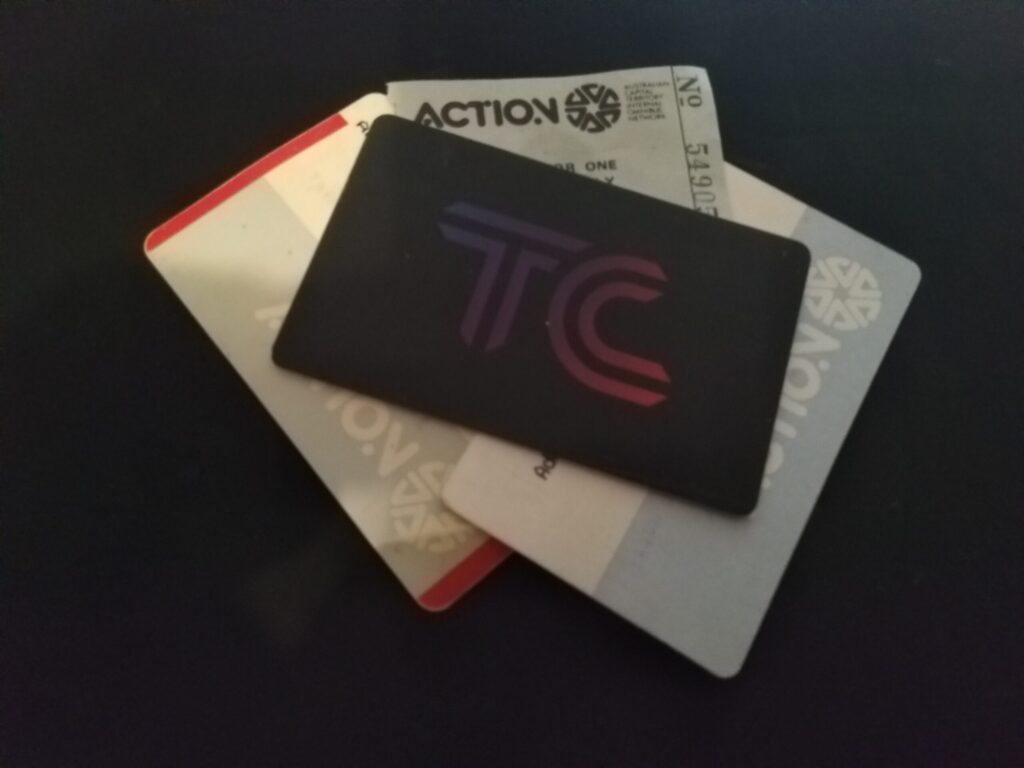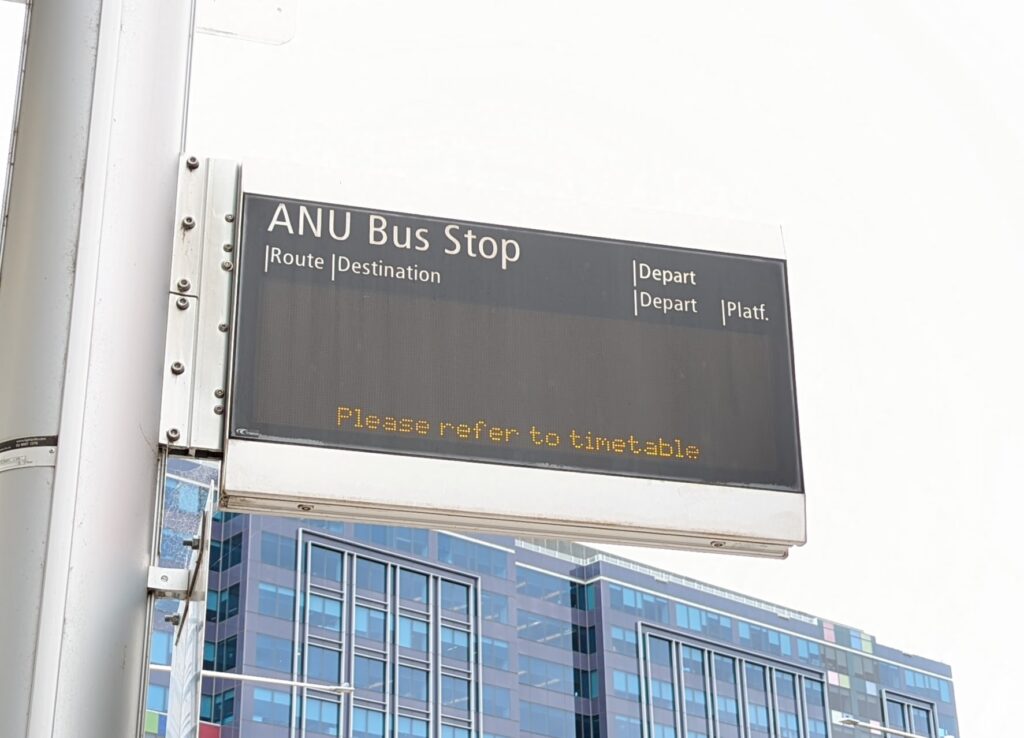You may have seen PTCBR making noises recently about the ACT Government’s tender to replace the ticketing and public information systems. We’re not the only ones, and the ACT Opposition has been asking similar questions. This article steps you through what it’s all about.

What’s the tender for?
The ACT is currently in negotiations for the provision of Next Generation Ticketing and Real Time Passenger Information Systems. This is what it sounds like: a new ticketing system to replace MyWay including the cards, terminals, vending machines and systems which support them all.
It will also replace the passenger information systems which can tell drivers and passengers where all our buses and trams are, and how long it will take for them to get places. Drivers have GPS-linked consoles which track how a bus is travelling against the timetable, and that data is used to inform the passenger information displays on board and at interchanges, and also mobile apps such as NXTBUS and AnyTrip.
Why do we need a new system?
There are a few reasons for this. The first is that ticketing technology has come a long way since MyWay commenced in 2010. Most Australian cities now accept payments with credit cards and smart devices, and Canberra is behind the times. With all services now cashless, it can be very difficult to board a bus if you forgot your MyWay card, particularly given there are so few recharge agents around town. In practice, we simply see a lot of drivers waving on passengers without cards, resulting in lost revenue for Transport Canberra. The MyWay system is also relatively slow, cumbersome (topping up your card takes days to load using a clunky ACT Government system) and prone to breaking.
We are also increasingly seeing the rise of “Mobility-as-a-Service” subscription platforms allowing passengers to pay a monthly fee for a bundle of public and active transport services, such as Opal+ in NSW. While there are good reasons to be skeptical of these new “Netflix-style” offerings, it’s important we have the flexibility to adapt our ticketing system as required.
Finally, the real time passenger information system is equally important to update. The existing NXTBUS system frequently goes offline, and buses often get lost or become difficult to track. While Transport Canberra has been good at allowing third party app developers to use NXTBUS data, these apps are only as good as the data they receive, so it’s time for something better.

Why is it taking so long?
This is the multi-million dollar question. The ACT has been looking to procure a new ticketing system since 2017, and an earlier process was scrapped in 2021. An Expression of Interest went out in September 2021, which anticipated the new system would be operational by November 2022. However, in February 2022, Transport Minister Chris Steel revised this timetable, expecting a supplier would be appointed “by mid-year”. It’s now the middle of the year, and we’re still waiting. Canberra Liberals Transport Spokesman, Mark Parton, has also criticised the delay, saying “This project has been delayed and fallen through so many times that I wonder if the minister is even serious about delivering this project for Canberrans.”
Contract negotiations can be unpredictable, and it’s hard to know the specific reasons for the delay. But this is the latest in a number of overdue transport projects. For example, the ACT budget has had money set aside for a new bus depot in Woden since 2016, but it is now unlikely to be delivered until 2024. It’s now been almost 6 years since ACT Labor announced the next stage of light rail would go to Woden, and stage 2A will only make it to Commonwealth Park by 2024. PTCBR is concerned there is no real urgency in delivering these much needed projects, and we have regularly called on the ACT Government to invest in its project delivery capabilities to ensure we get the transport system the Government says we deserve.
Can’t we just make it free instead?
We see this question come up a lot. But even with Transport Canberra’s low farebox recovery rates, it still brings in much more in revenue than it costs to buy and operate the ticketing system. The MyWay system cost $8m in 2010, and even during 2020-2021, when patronage was severely affected by COVID-19, TC received $25m in ticket revenue. Four months of ticket revenue paid for a decade’s worth of ticketing system.
Making public transport free will cost a lot of money, and PTCBR’s position has long been that if there is money available to make PT free, then that money should be used instead to make PT better. All available evidence suggests it is the quality of service, and not price, which is the main factor for whether people decide to use public transport. If we want fast and frequent services in Canberra, making them free is not the best way of getting there.
…..
Become a PTCBR member today to support better public transport in the Canberra region. To keep up to date with PTCBR’s advocacy, follow us on Twitter, and join our Facebook group.